Stronger Together
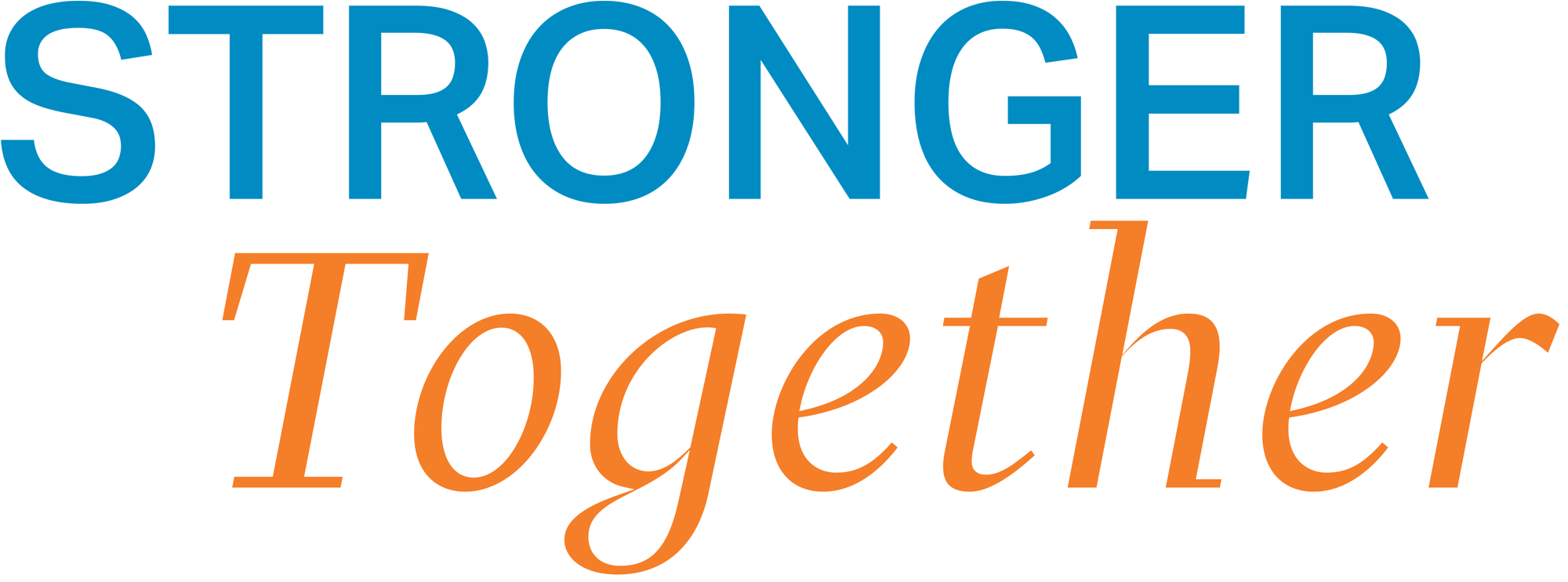

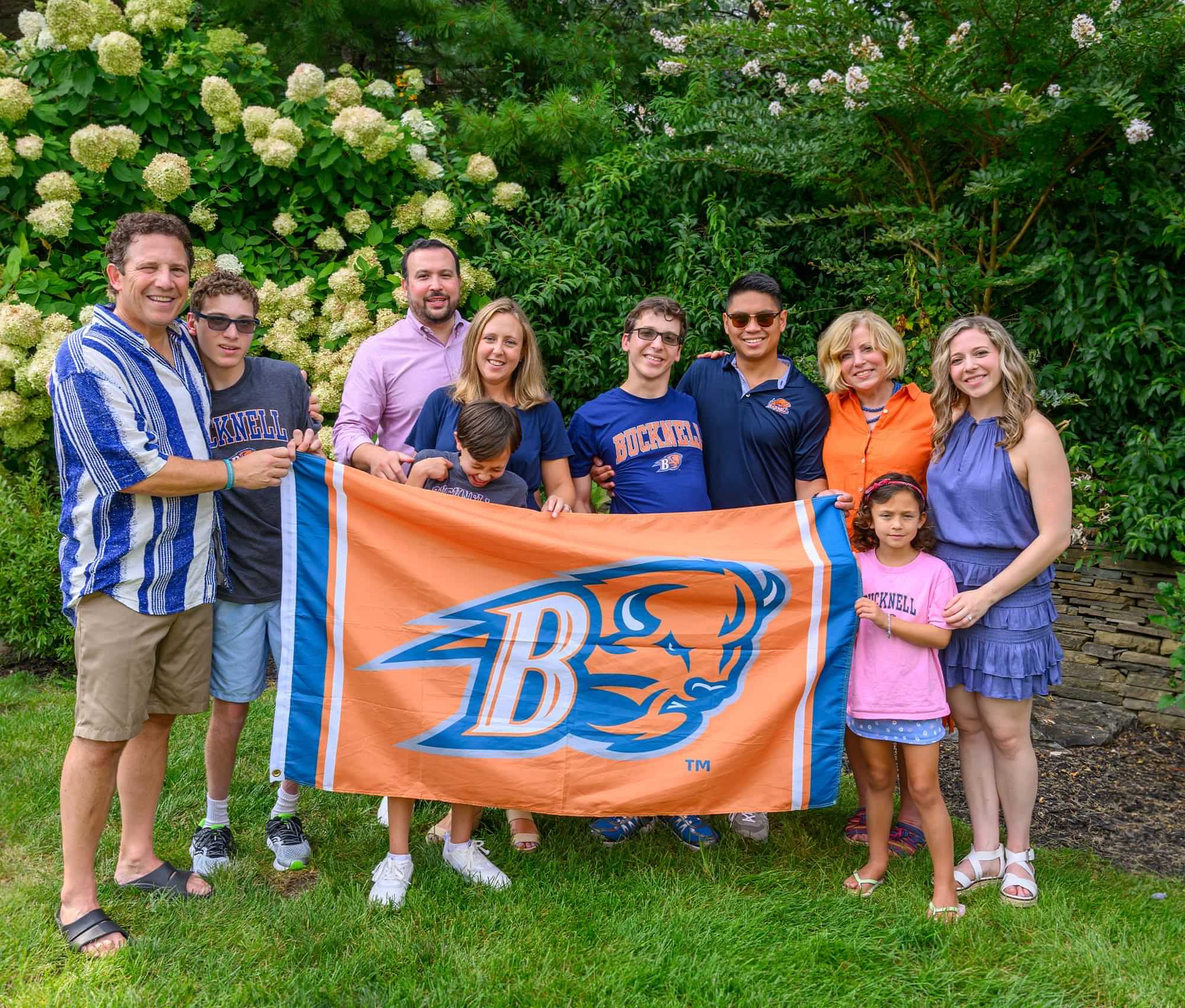
An unlikely diagnosis, a serendipitous meeting and a shared hope for the future create a cherished bond between two Bucknell families
photography by
April Bartholomew
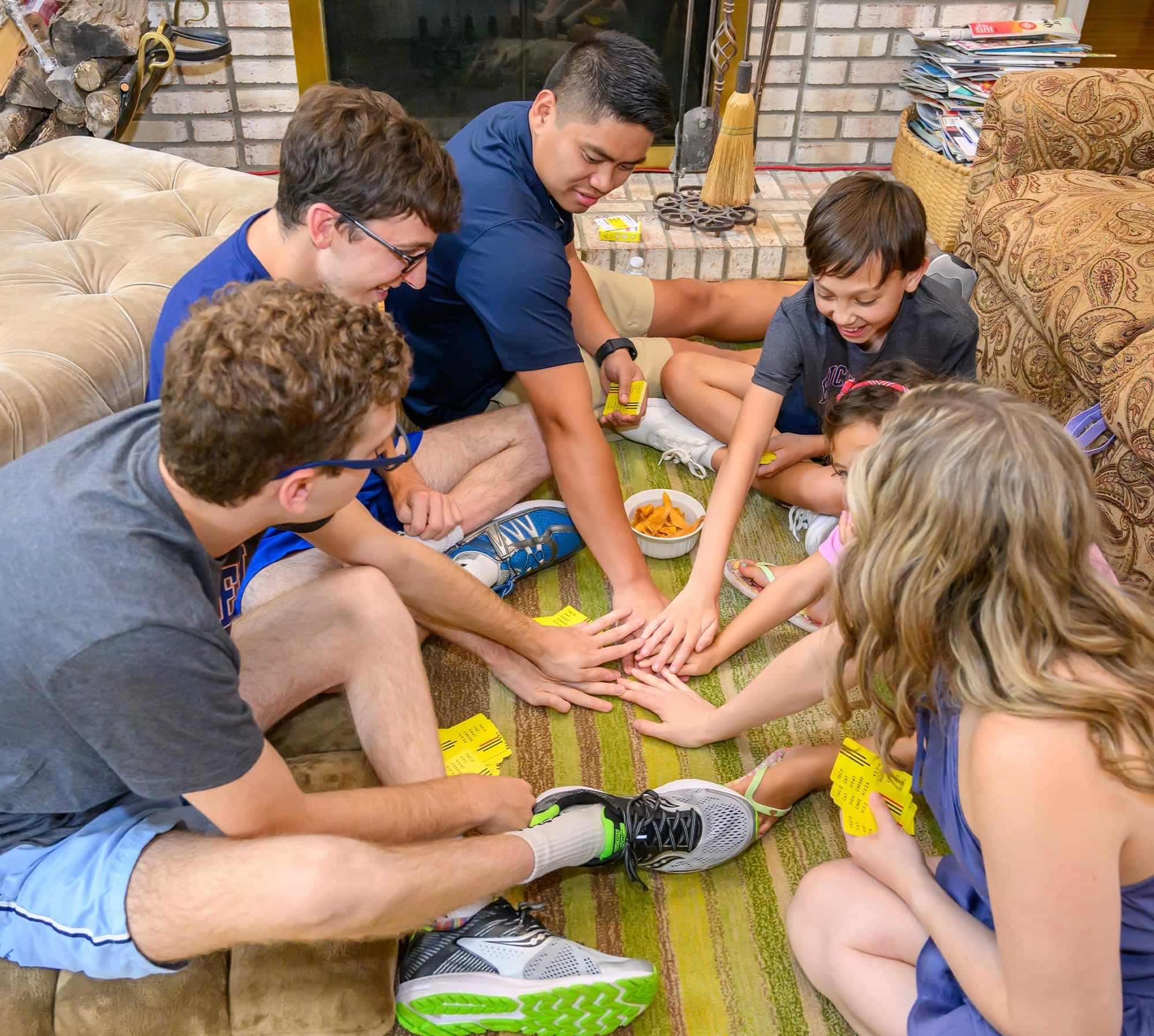
The Gale and Agostini families met in person for the second time in September at the Agostinis’ Denville, N.J., home.
Peter Gale ’05 says one of his most vivid Bucknell memories is gathering in Rooke Chapel during New Student Orientation in 2001 with more than 900 18- and 19-year-olds. Gale was excited in that nervous way you feel when the rest of your life is about to begin. When your future is a gift that has yet to be opened. An administrator addressed the students and said something that, despite the aura of possibility, seemed outlandish to Peter at the time. “Look around,” he said before pausing for dramatic effect. “Half of you will marry someone in this room.” Peter, who grew up in Bethesda, Md., remembers thinking, Really? What are the odds?
But a month or two into that first semester, Caroline Robbins ’05, also a first-year student, caught Gale’s eye in a biology lab. Robbins grew up in Greenwich, Conn., as part of a Bucknell family. Her dad, David Robbins ’74, P’05, P’09, had graduated from Bucknell, and her younger brother, Nick Robbins ’09, would eventually attend (and meet his wife, Cary McDermott Robbins ’09, there).
Caroline’s and Peter’s relationship progressed their sophomore year, when they both lived in the Mods. Caroline, an elementary education major, and Peter, an economics and political science double-major, began dating, and before long, that odds-defying prediction from Orientation began to feel more like fate. They got married in 2010, and as at so many other Bucknell weddings, their friends and relatives gathered for a group photo with the classic blue-and-orange Bucknell banner held up like a super-sized security blanket.
They settled in Caroline’s hometown, and in 2013, their son, Preston, was born. Preston started walking around 15 months, a little late but within the normal range. “He was a big, strong baby,” Caroline says. But when he was around 18 months, they noticed he listed to one side when he walked. Caroline took him to a doctor and said, “Watch him walk down the hall. He is off balance. Something doesn’t look right.” But as is often the case with developmental quirks, clinical certainty eluded them. “They just said, ‘Well, he’s a really big kid. It’s probably just the weight.’ ”

To help the Agostini sons build and maintain strength, their parents installed a home gym in the family’s basement (right). Preston and Lucy enjoy gym time with their dad, Peter Gale ‘05 (above).
To help the Agostini sons build and maintain strength, their parents installed a home gym in the family’s basement (below). Preston and Lucy enjoy gym time with their dad, Peter Gale ‘05 (above).
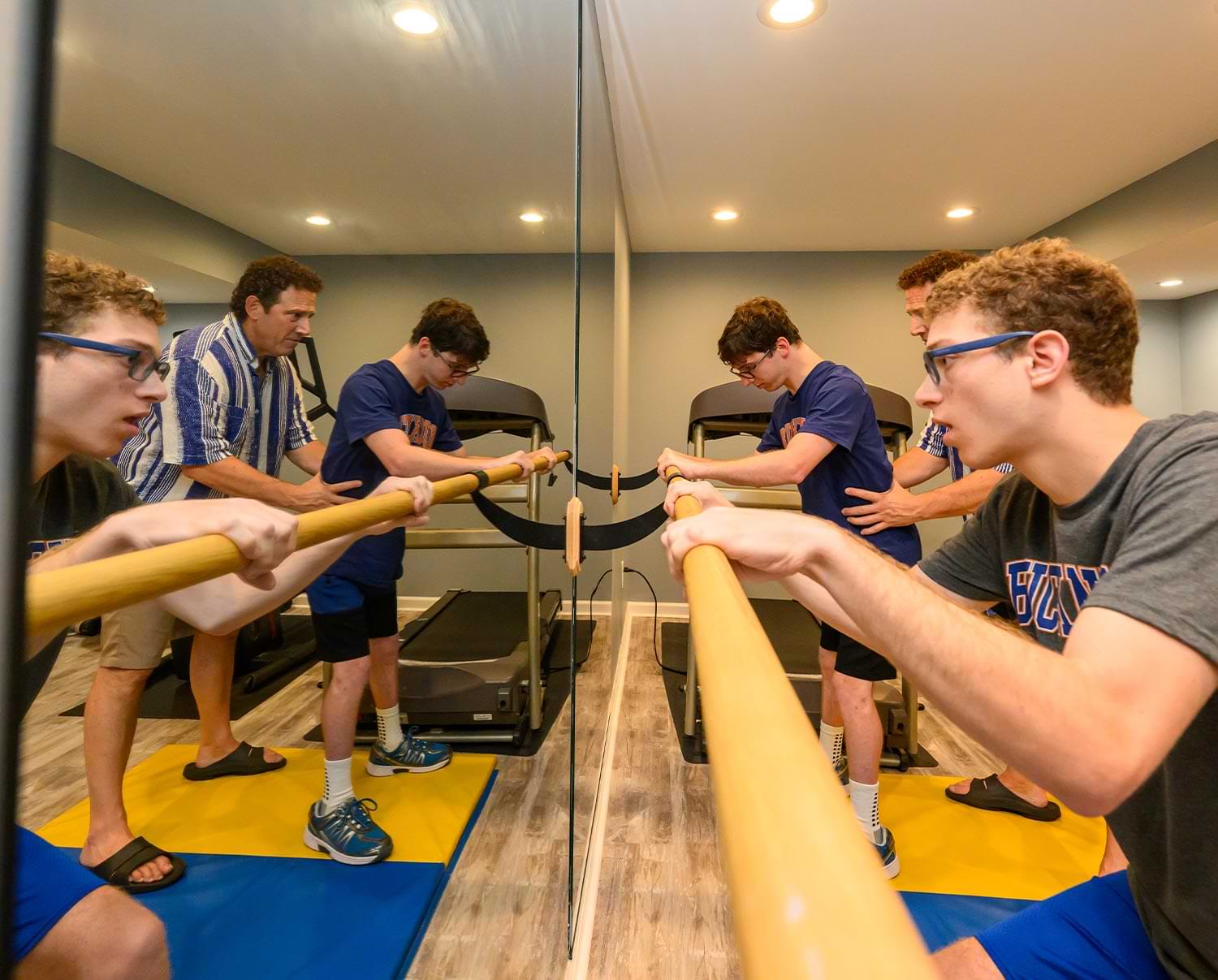
In many ways, Preston’s childhood unfolded in typical fashion — baseball, swimming, Cub Scouts. But other coordination issues emerged. An occupational therapist who visited his preschool when he was 4 thought he might have cerebral palsy. The Gales spent an agonizing year going to specialists. Finally, in 2021, when Preston was almost 8, all three of them underwent genetic testing. The results brought devastating clarity. Preston was diagnosed with ataxia with oculomotor apraxia, or AOA1.
Ataxia — derived from the Greek word for “lack of order” — is not a specific disease, but rather a symptom of many diverse conditions that affect the nervous system. It is estimated to afflict one in every 5,000 individuals. Common symptoms include degraded balance, motor skills and muscle coordination. People affected with it often have trouble walking, speaking and using their hands, arms or legs. Inevitably, they need to use mobility aids known as gait trainers to get around. The oculomotor apraxia in AOA1, Preston’s disorder, makes it difficult to move the eyes voluntarily or focus the gaze.

Peter and Caroline found themselves immersed in a tiny, bewildering world they hadn’t known existed. According to the National Ataxia Foundation, “Families who have a child with ataxia are forced to adapt to constant change and uncertainty. There is struggle, helplessness and heartbreak.” They leaned on their families and friends, but even that support had its limits. No one truly understood what the Gales were going through; they barely understood it themselves. “We felt a need to find a connection, because we knew that’s how we’d get through it,” Caroline says.
She spent countless hours scouring Facebook and making phone calls, looking in vain for doctors, researchers or other families who could help them. “When we got the diagnosis, I thought there was going to be this team,” Caroline says. “That all these doctors would get involved. But there was no team. It’s like plunging off a cliff, and there’s no safety net. There’s no one there to catch you.”

Matthew and Christian Agostini’s parents ensured they had active childhoods participating in sports (below) and visiting their sister, Danielle Agostini Gorospe ’16, at Bucknell (left).
Matthew and Christian Agostini’s parents ensured they had active childhoods participating in sports (below) and visiting their sister, Danielle Agostini Gorospe ’16, at Bucknell (above).
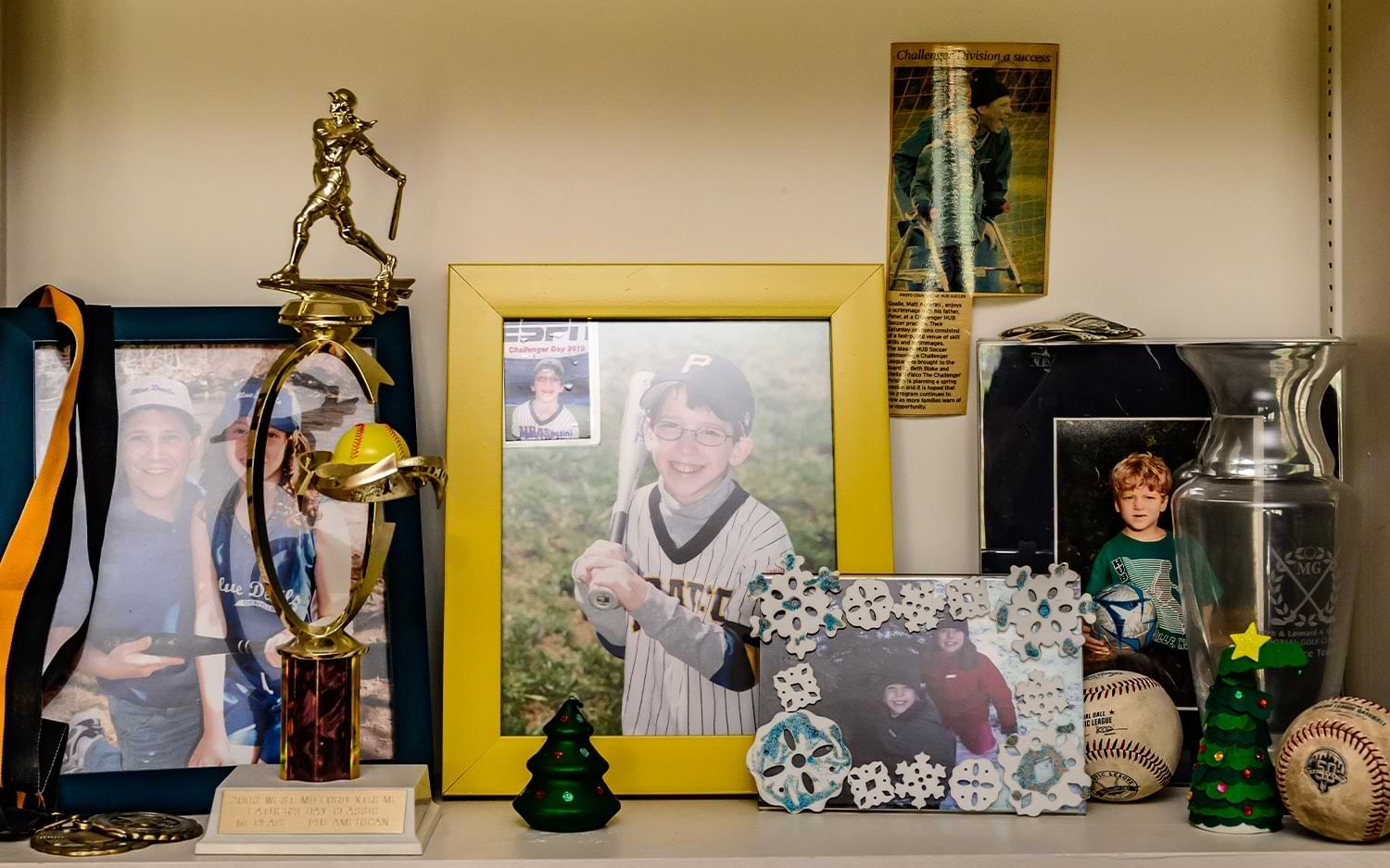

Danielle knew all about the extremely rare disorder called AOA1. Both her brothers had been diagnosed as young boys — first Matthew, who is two years younger than Danielle, followed by Christian, who is eight years younger. Their parents, Peter and Susan Agostini P’16, noticed the same early gait imbalances, embarked on the same desperate search for medical expertise, and staggered through the same emotional wilderness the Gales were plunged into. They just had a 15-year head start.
“The biggest challenge is that it’s not understood by many people at all,” Susan says. Doctors attributed the boys’ symptoms to an inner-ear disorder or possibly vertigo or low muscle tone that would improve with physical therapy. “It was really hard for us, just … overwhelming.”
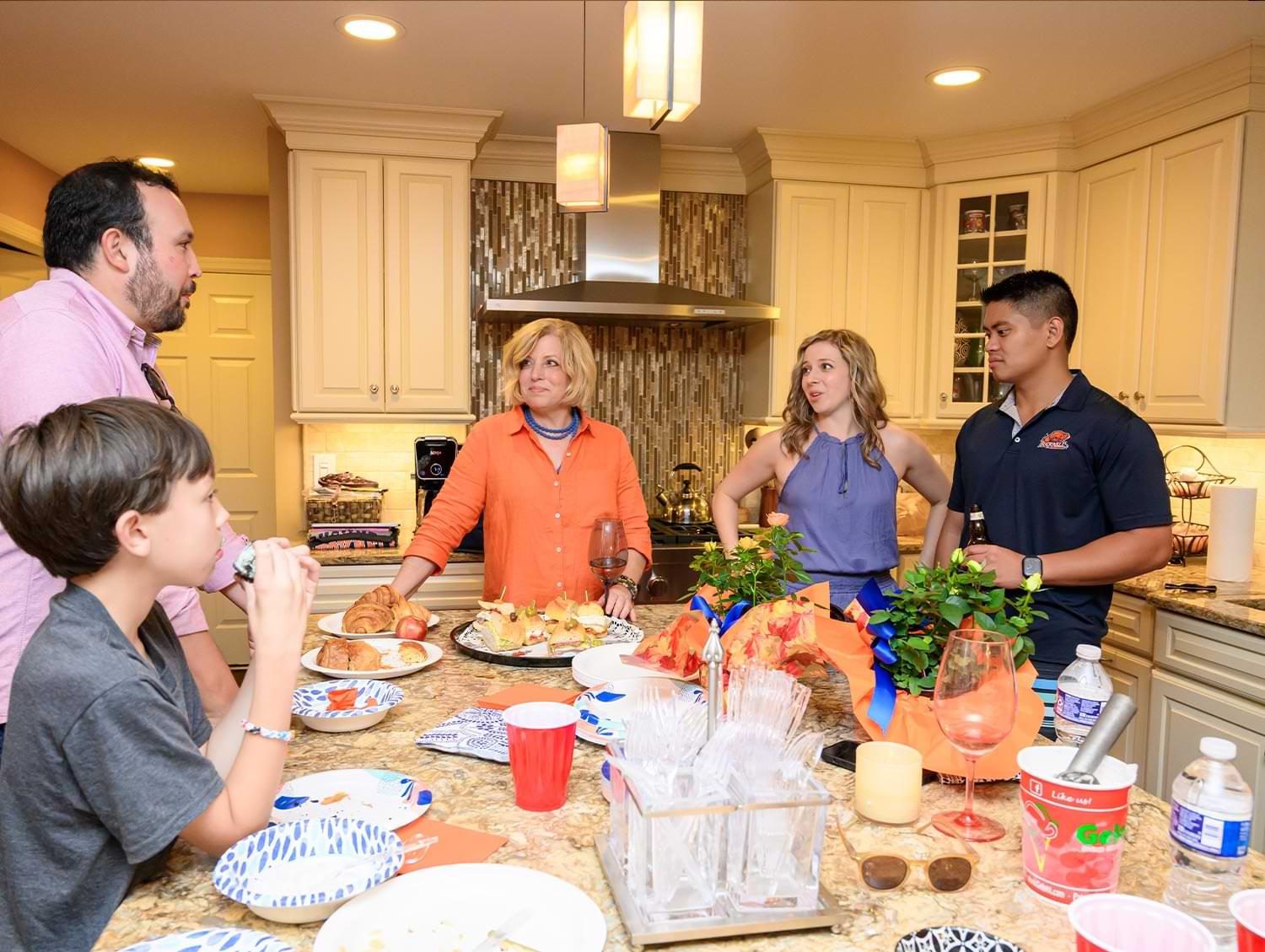
Peter Gale ’05 and son Preston with Susan Agostini P’16, Danielle Agostini Gorospe ’16 and her husband, King Gorospe ’15.
The Agostinis resolved to attack every day and get their sons whatever they needed to have the best possible quality of life. “My goal was to get them on their feet, keep them strong,” Peter says. He started them in adaptive soccer and baseball leagues, arranged for horseback-riding lessons, set up multiple workouts every week with physical therapists, and bought a tandem-recumbent bicycle so he can sit in front and, with one son at a time sitting in the back, provide them with a simple but formative experience — riding a bike — that would otherwise be out of reach.
Peter and Susan, who both graduated from Fordham University, fell in love with Bucknell when Danielle enrolled. They frequently took Matthew and Christian to campus for basketball games, followed by burgers at Bull Run Tap House. “It was really great to be able to show off my school and have my brothers be a part of it,” Danielle says.
When your children live with an incurable, degenerative disease, it can be hard to think about the future. AOA1 attacks the nervous system, but it also erodes your sense of hope. In 2014, however, Peter attended a National Ataxia Foundation conference in Las Vegas. One of the featured speakers was Brent Fogel, a professor of neurology and human genetics at UCLA and the director of UCLA’s Clinical Neurogenomics Research Center. Fogel’s team was working to develop a novel gene therapy for treating AOA1 and other genetic disorders. In gene therapy, viral “vectors,” or delivery mechanisms, are commonly used to replace disordered genes with functional genes. The problem is that a viral vector also signals the blood-brain barrier to attack the virus, effectively killing the messenger and preventing any therapeutic effects. Fogel believes a different delivery system — one that relies on a polymer instead of a virus — could deliver functional genes directly to the brain. Over time, the therapy has the potential to slow and possibly even halt the degenerative symptoms of AOA1. Even if a cure remained out of reach, the future suddenly carried promise.
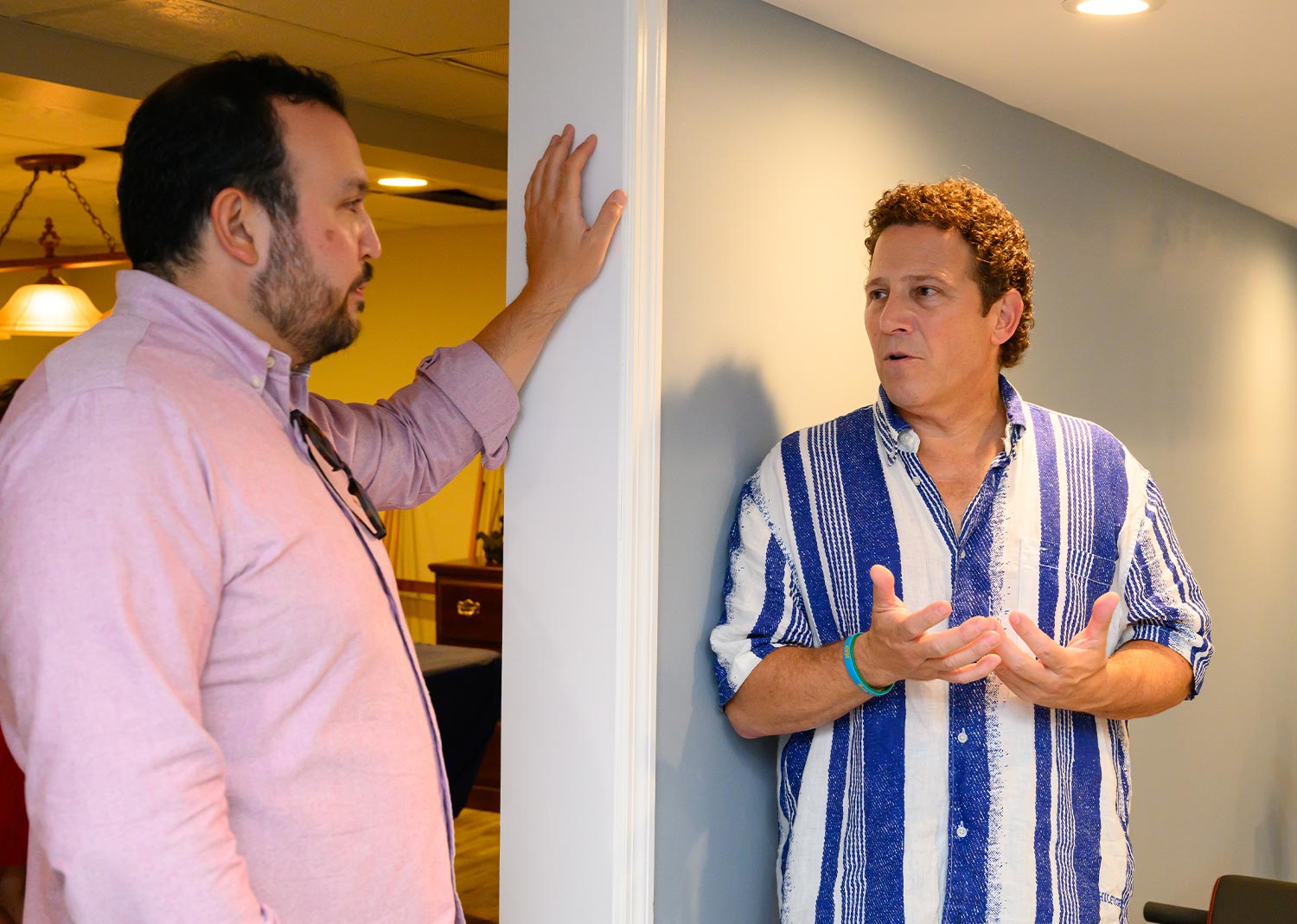
Peter Gale ’05 (far left) and Peter Agostini P’16 are raising funds to support a novel gene therapy that could slow the progression of AOA1.
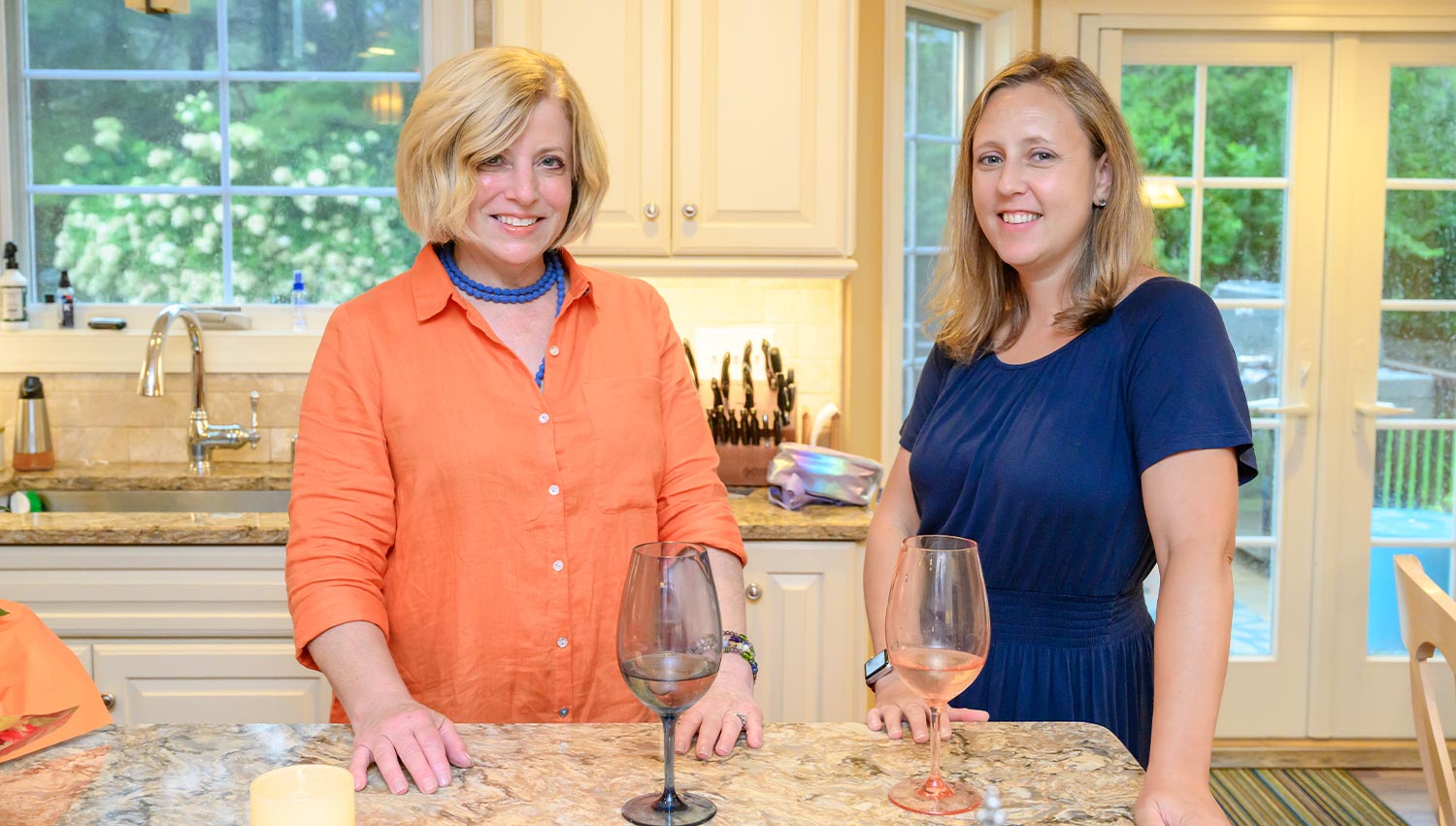
The Agostinis put their sons under Fogel’s care and formed a crowdfunding partnership with UCLA Health in 2020 to support the gene-therapy research. The endeavor raised $250,000 in a year.
Soon after, in 2021, a mother in California whose sons had AOA1 reached out to the Agostinis. She’d been contacted by a family whose young son had just been diagnosed with AOA1 and asked if the Agostinis might be willing to talk to them. “She told me they were in Greenwich, Connecticut, and I immediately thought, Oh, that’s not far from us,” Susan says. “What are the odds?”
They agreed to set up a Zoom call.

To which Peter Agostini said, “My daughter went to Bucknell!”
Followed by Caroline: “My dad and my brother both went to Bucknell!”
“The minute I saw that shirt, I was like, Great, we’re in,” Caroline says.
“There was no question in my mind that a Bucknell family wouldn’t be kind, supportive and helpful.”
Kind, supportive, helpful — check, check, check. “We basically follow their lead with everything,” Peter Gale says.
Take exercise routines. Preston, who is 10, wakes up at 5:30 a.m. to do a cardio workout and planks with Caroline every morning.
But learning about school interventions and adaptive technology has been particularly impactful. “Because I understand this disorder so thoroughly, I’ve spent so much time educating teachers and support staff,” Susan says.
For instance, when Matthew was in third grade, he failed a geometry test. “I looked at the test,” Susan says. “They were supposed to calculate the area and perimeter of all these circles and boxes, but everything was so tiny. It was hard for me to see, let alone someone with ocular-motor apraxia.” Susan faxed the test to a neurologist. The doctor connected Susan with children’s services at the New Jersey Commission for the Blind and Visually Impaired, which advised the school on creating visually appropriate materials with bigger, bolder type.
“You can put extensions on your computer to take out visual clutter if you’re reading something online,” Susan says. “All these visual enhancements have been great educational strategies. They’ve enabled the boys to really succeed because this condition does not affect them cognitively. Visual problems are what trigger the learning disabilities.”
Susan’s experience prompted Caroline to put Preston’s teachers in touch with the person responsible for visually impaired students in Greenwich. “Susan and Peter have helped us narrow things down and address issues with specific solutions,” Caroline says. “I hadn’t been able to wrap my head around those things until we started talking.”
The Gales have also followed the Agostinis’ lead with fundraising. In December 2021, they set up their own crowdfunding partnership with UCLA Health, with a goal of also raising $250,000. So far, they’ve exceeded $173,000 (learn more at spark.ucla.edu/project/29493/wall). It’s an ambitious goal, but they are motivated. “Dr. Fogel’s research is our only hope,” Peter Gale says. “It’s the only thing we can cling to.” Fogel anticipates it may take years for AOA1 treatment to become possible. But by working together, sharing ideas and coordinating outreach, the Gales and Agostinis no longer feel alone in their journeys.

Despite their strong connection and close proximity, the Gales and Agostinis haven’t yet met in person. The Gales wanted to be sure that they — and Preston — would be ready. Spending time with the Agostinis would be like peering into the future, one that will bring further loss of mobility, language and fine motor skills.
The three boys sit together at a table under an umbrella on the back patio. Although they’re six years apart, Matthew, who’s 26 and in his third year at Rutgers University, where he takes online classes, and Christian, 20, might pass for twins. They both have their father’s curly brown hair, and each is wearing glasses and vividly striped socks with rugged-looking running shoes. Matthew is sporting one of their many Bucknell T-shirts. They look slender and strong and very excited to have company.
Preston has brought along his bright-yellow backpack, which holds a composition notebook for sketching and writing, an illustrated book about engineering and data visualizations, and an iPad. “He loves math and maps and science,” Caroline says. “He’s always thinking, ‘I need entertainment — give me some math problems.’ So he brings that backpack everywhere.”
For the next few hours, the Gales and Agostinis catch up like the not-so-long-lost friends they have become. Danielle and King have driven out from Union City, N.J., for the day. She details their summer travel plans — naturally, there’s a Bucknell wedding coming up — while Susan and Caroline discuss developments at Preston’s school, which recently informed the family that he’ll need to start taking the elevator because going up and down the stairs with his gait imbalance has become a risk. The two Peters compare notes on Fogel’s progress at UCLA, prepping for a Zoom call they have with him next week.
Over lunch, the conversation turns to the boys’ favorite foods — always a popular subject. Kids with movement disorders like AOA1 burn lots of calories, so they eat a lot. Preston ticks off pizza, lasagna and mango, and enthusiastically describes the burger-rating system he and his father have devised. McDonald’s gets an 8, and, thanks to bacon, Daddy’s Homemade Adult Burger gets a 9. Matthew says he loves steak — ideally sharing a porterhouse for two with his mom — and Christian adds that his favorite is short ribs over mashed potatoes. He smiles widely with the mention of it.
After lunch, King helps the brothers get their gait trainers so everyone can sit by the pool, which the Agostinis customized with a 25-yard shallow section for aquatic therapy. Peter Agostini asks the boys if they have any song requests. “Preston loves ‘High Hopes’ by Panic! at the Disco,” Caroline says. “It’s a really good, positive, inspiring song.” On Peter’s command, it plays from speakers in the garden.
Had to have high, high hopes for a living
Didn’t know how, but I always had a feeling
I was gonna be that one in a million
Always had high, high hopes
This isn’t a wedding, but at the end of the afternoon, it feels right for the Gales and the Agostinis — parents, children, husbands, wives — to gather and raise the blue-and-orange banner for a photo and the long-honored cheer, which sounds today less like a rallying cry and more like an offering of thanks: “ ’ray Bucknell!”